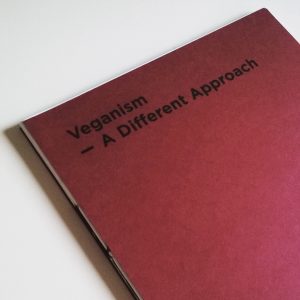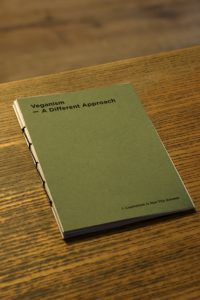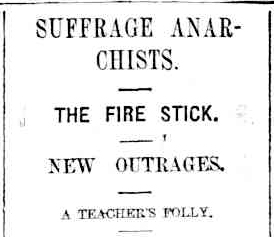Posts Tagged ‘writing’
Veganism: A Different Approach – I. Capitalism Is Not The Answer
Saturday, August 27th, 2016For the past few months we have been working on putting together a publication that is aimed at the Norwich and Norfolk vegan scene, one that would introduce what seems to be an important but missing discourse from the community.
Miriam Pratt
Sunday, April 17th, 2016In the early hours of 17th May 1913, a fire broke out in a house on Storey Way, Cambridge. As it raged, the flames spread to the adjoining building – a laboratory belonging to Cambridge University – causing further damage that left it in great need for repair. Once the fires were kept under control and eventually extinguished, the police moved in looking for evidence of its cause. They found a watch and remnants of a ladder that had been wrapped in paraffin-soaked cloth and set alight. It was arson, and the watch belonged to a woman from Norwich.
Downham Market Food Riot
Saturday, February 20th, 2016The Downham case was the most serious of all the local disturbances at this time.
A wave of discontent swept through England in 1816. Following the end of the Napoleonic Wars in 1815, France’s European neighbours considered the country a liability and signed into the Treaty of Paris the need for an occupational force. The British component of this coalition military – 150,000 strong in total and called by some the Army of Occupation – was led by the Duke of Wellington. Thirty thousand men were sent from the British Army alongside an equal number from Austria, Prussia, and Russia as well as smaller numbers from five other European states.
The financial cost of this occupying force was propped up by France so that, in theory, the countries of the Army of Occupation would not lose out on having to undertake this task. By 1816, though, Britain’s financial situation met dire straights and reverberated throughout society and became what is proverbially known as the “food riots”. Three key factors came together to create this perfect storm: the war irreparably changed the international commercial market; taxation was increased to refill the country’s coffers emptied during the conflict; and freak climactic conditions caused much of the year’s harvest to fail. Back then, as it is today, those most affected by a failing economy were the poor and working classes.
Weighted beneath the pressure of high prices and falling living conditions, people across the country took to the streets in 1816 as an expression of their rage. Norfolk was no exception.
It was on the 16th May in this year that an alarming riot occurred in Norwich. Late in the evening a large number of the unemployed assembled in the Market Place and created a disturbance by throwing fire-balls. They next smashed the windows at the Guildhall and proceeded to the New Mills, breaking all the street lamps and the windows of several houses on their way thither. On arriving at the mills, the ringleaders broke into the stores and removed a large quantity of flour, some of which was thrown into the river and some carried away. Returning by way of St Andrew’s Bank Street, and Tombland, in each of which localities the mob committed great depredations, they marched to Magdalen Street, and made a hostile demonstration in front of the residence of Dr. Alderson. Upon the doctor coming out to remonstrate with them, the ruffians knocked him down and subjected him to brutal ill-treatment.
Because the cream of the British Army crop were stationed in France, it fell to the “B Team” troops to fight the rioting people. The Yeomanry Cavalry, volunteer horse-mounted units used primarily for domestic situations, were tasked in many counties to undertake defence of the State and calm the dissent through force. These forces were first created in the 1790s following fears of an invasion of Britain by Napoleon and drawn from small-time farmers, with officers drawn from the gentry as was commonplace throughout the military at the time. So what we find in the 1816 riots once again are the working classes pitted against the working classes at the behest of the upper classes and the State.
Though riots raged in Norwich, it was not the only place in Norfolk that saw uprising and insurrection. Violence broke out in Rockland, and Wisbech was occupied by 120 cavalry due to the threat of unrest, but it was Downham were the most spectacular actions occured.
Just days after the events in Norwich, three Downham district magistrates – John Thurlow Dering, Mr. Hare, and Mr. Pratt – met at The Crown pub to discuss concerns and demands put forward by many in the local population. Their solution to the crisis of the moment, which led to families unable to feed themselves due to low wages and high prices, was to offer a slightly increased wage and slightly lower price on flour when bought by families of four or more individuals. This was not early good enough. Crowds from Downham and other nearby villages had gathered for the decision and, after hearing the bullshit solution, reacted with outrage. From their announcement in the market place, the magistrates were chased by stick and bludgeon-wielding rioters all the way back to The Crown, where the crowd apparently threatened to defenestrate the trio.
Thus pursued, the magistrates attempted an escape by a back way, but were followed and pelted with stones and dirt. Mr. Pratt and Mr. Dering received several violent blows, and with difficulty obtained refuge in different houses — Mr. Dering at Mr. Wales’, Mr. Hare at Mr. Lemmon’s, and Mr. Pratt at Col. Say’s. Mr. Dering was the principal object of the mob’s vengeance, and was so hunted that he had to be concealed in a garden for two hours, the excited people declaring they would murder him if they could find him. He and Mr. Hare afterwards escaped to Mr. Safiery’s. Shops were meanwhile plundered of their goods, and publicans were compelled to make gratuitous distribution of beer.
Yeomanry Cavalry from Upwell were sent to combat the looters and rioters in Downham and in the ensuing crackdown wherein many of those participating in the riots were arrested, word came to the small parish of Southery that two men from the village had been taken in. On the morning of 20th May a meeting was held by the parishioners during which it was decided that they would march to Downham in order to demand the release of their fellow villagers. Picking up others en route, a crowd of between 700 and 800 arrived in Downham armed with sticks, scythes, pitchforks, and even shotguns to join the unrest. The total crowd now numbered around 1500 and comprised both men and women.
Magistrate Dering, stricken with terror at the sight of this approaching mob, acquiesced immediately to their demands and released both Southery men. It seems the crowd took this small victory as fuel for the possibilities of their communal power and, rather than dispersing in satisfaction, began demanding that the doors of Downham prison be thrown open and all inmates released. Dering, afraid, agreed once more and the prison was emptied, and the inmates disappeared into the mass so that they would not be recaptured.
Unfortunately not everybody got away. The Upwell Yeomanry, with the help of special constables (volunteer police types), were able to seize 19 of the rioters following a reading of the Riot Act by John Dering at 5pm in the market square. This caused the mob to peter out and disperse, leaving Downham quiet once again. It is said some of the rioters went onto the Cambridgeshire town of Littleport and continued their attack on the injustices of the State when riots broke out there on 22nd May but only one man by the name of Thomas Sindall appears to be confirmed at both outbreaks.
Of the 19 that were arrested in Downham, nine men and six women were sentenced to death following a brief trial in August 1816. Thirteen of these sentences were commuted but two still hung at Norwich Castle: Daniel Harwood, 22, who was taken from a pregnant wife; and Thomas Thody, 25, who was taken from a wife and two children. There is no word of what happened to their families.
The food riots of 1816 continued to rage throughout the rest of the country but the Downham incident appears to have been the final mass disturbance relating to the post-Napoleonic fallout in Norfolk.
The Battle of Ham Run
Tuesday, January 12th, 2016The unusually named Battle of Ham Run occured in 1887 following a speech by anarchist communist agitators James Fred Henderson and Charles Mowbray. Its exact date is stated as either 14th or 17th January, depending on the source, but is most commonly refered to as occuring on the 14th. Unfortunately there are not many details about exactly what happened but what we can find is related below.
Henderson had arrived in Norwich in 1886, establishing a local branch of the then-nascent Socialist League (SL), an organisation founded as a revolutionary dissident splinter from the more moderate Social Democratic Federation. Charles Mowbray was secretary for this same branch, having arrived in Norwich he same year as Henderson following growing anarchist repression by police in London, where Mowbray had worked alongside William Morris to set up the original SL branch in 1884. Together Henderson and Mowbray built a strong SL presence in Norwich, evident in the regular meetings of unemployed persons organised by the Norwich SL branch that saw large numbers in attendence.
Together, one day in mid-January during one of many waves of high unemployment affected England at the time, one of these speeches turned from fiery rhetoric to incendiery action. Henderson and Mowbray set themselves up in the Haymarket for one of their regular rallies and a crowd of more than 500 people gathered. He derson and Mowbray denounced the Mayor of Norwich and encouraged rebellion, stating that it is not a crime to take food if it is wanted or needed.
Riled and raged, the crowd poured on to Gentleman’s Walk and began marching towards Guildhall, smashing shop windows, looting food, damaging a bank, and – according to some sources – attacking the mansions of the rich on the way. (This latter accusation seems anecdotal at best, though, due to a lack of residential properties along Gentleman’s Walk.) It is during the looting of one such shop that the incident received its name: the first copper to arrive at the scene noted that
I saw a ham run over the heads of the crowd
In other words, a ham had been taken and was being passed above the heads of the people in the crowd. Imagine the ham being crowdsurfed to the back.
There is no information on who exactly the participants in this crowd were, with no information available about those involved beyond Henderson and Mowbray and two other men named in court proceedings: H Hurrell and H Hall. All four were brought to trial and found guilty on 21st January 1887. Mowbray received nine months on the treadmill in Norwich Castle; Henderson received four months on the treadmill in Norwich Castle; Hurrell received one month’s hard labour; Hall received one week’s hard labour. The court itself states the trial as being for:
…riotously and tumultuously assembing to disturb the public peace, and with doing damage to the windows of the bank of Messrs Lacon, to the shop window of Mr Bonser, and to the shop of Mr Ladell…
During sentencing it appears the Judge was eagre to emphasise the wellbeing of the people of Norwich and how well the city cares for its workers in an attempt to undercut the growing rage of socialist and anarchist sentiment. Florence Boos’ annotations to William Morris’ journals present a brief excerpt from the Eastern Evening News’ 2000 word report on the riot.
. . . there was no town where the working class were more cared for. . . than Norwich. . . He was happy to know that in this country there was no reason why anyone should starve. . . In most large towns there were always a certain numbers of loafers who would rather be idling on a very small pittance than be flourishing on handiwork… Now he hoped that the working men of Norwich would take warning from that which had happened.
None of this stopped either Henderson or Mowbray from continuing their political activities, though. Henderson was arrested soon after his release, in July 1887, for heckling Lord Salisbury on the latter’s visit to Norwich, whilst Mowbray went on to write for The Commonweal and was arrested in 1892 for his ongoing espousal of violent revolution.
Why Vegetarianism Still Matters: An Environmental Perspective
Tuesday, December 15th, 2015Recently we had an article published in long-running anarchist periodical Slingshot. Based on the topic of why veg*nism should matter to anarchists concerned with the environment, we put forward a statistics-heavy argument outlining why we believe veganism and animal liberation are fundamental to radically changing today’s world.
An online version can be found on Slingshot’s website here. Physical copies can be obtained by contacting us or emailing the Slingshot Collective directly.


